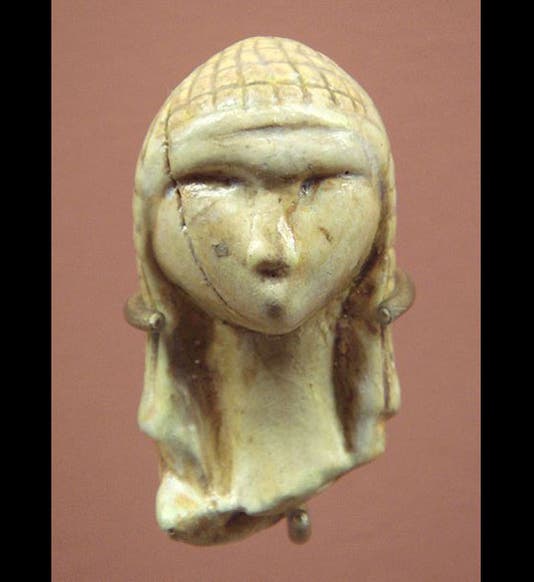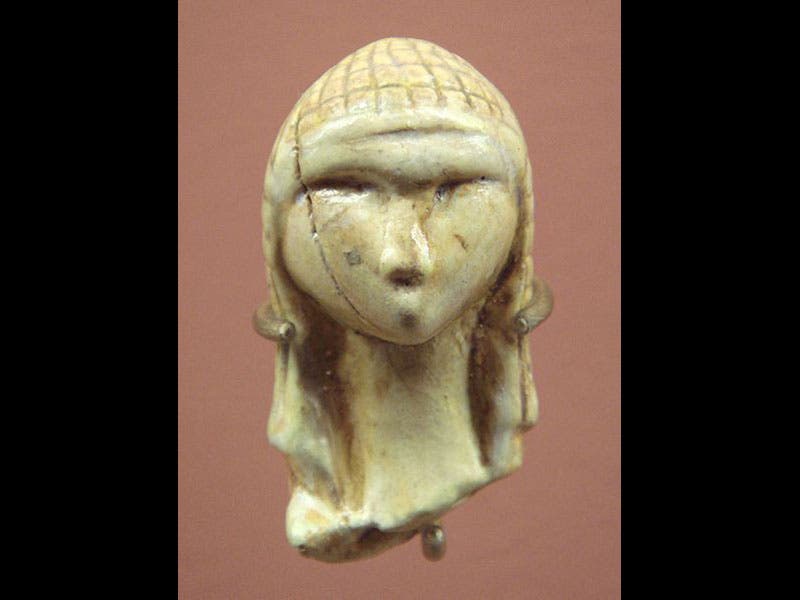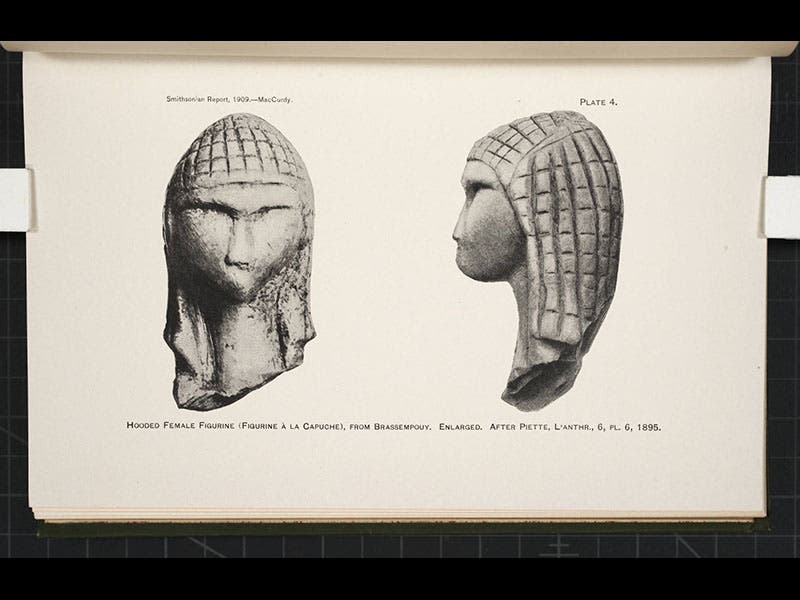Scientist of the Day - Edouard Piette
Edouard Piette, a French archaeologist, was born Mar. 11, 1827. In 1894, in the Grotte du Pape (Pope's Cave) in Brassempouy, in the southwestern corner of France, Piette found a small figurine carved out of mammoth ivory. It is only about one-and-a-half inches tall and depicts the face of a woman wearing a head covering (see first image above). At the time, this was only the third piece of Paleolithic sculpture depicting the human form ever found, and the first to show a face. Piette announced the discovery in 1895, in the journal l'Anthropologie (which is not in the Library’s holdings), and it quickly became known as the Dame à la Capuche (Lady with the Hood). It is often referred to as the Venus of Brassempouy (as Wikipedia does), but this is not correct, as Venus figurines are torsos, with no facial features, and there was another figurine found at Brassempouy, a partial torso with no head at all, that is the real Venus of Brassempouy (third image). But the Dame à la Capuche is a much more appealing figure, with her Mona Lisa hint of a smile, which is an even better trick in her case, since she has no real mouth. She was fashioned by a Cro-Magnon artificer about 25,000 years ago and now resides in the Musée d'Archaéologie Nationale at Saint-Germain-en-Laye, near Paris. In 1976, France issued a 2-franc stamp honoring la Dame (fourth image above).
Dr. William B. Ashworth, Jr., Consultant for the History of Science, Linda Hall Library and Associate Professor, Department of History, University of Missouri-Kansas City







![“Aurora Borealis,” hand-colored wood engraving by Josiah Wood Whymper, [Natural Phenomena], plate 2, 1846 (Linda Hall Library)](https://assets-us-01.kc-usercontent.com:443/9dd25524-761a-000d-d79f-86a5086d4774/0245ffcb-b70c-477c-8792-0a73ebd54eb2/Whymper%2011.jpg?w=210&h=210&auto=format&fit=crop)


